10 Projects to Help You Live in Your Home Forever
In response to demands from baby boomers, aging-in-place improvements that help seniors stay safely in their homes are more stylish and functional than before.

In response to demands from baby boomers, aging-in-place improvements that help seniors stay safely in their homes are more stylish and functional than before. Think of a curved and tiled shower soap dish that also serves as a grab bar. Or a decorative kitchen cabinet pull with a wider loop for arthritic hands.
More forward-looking homeowners are including aging-in-place features in home renovations such as a kitchen makeover, so they won't face last-minute decisions during a health crisis. And improvements such as curbless showers and LED nightlights in soothing colors in a bathroom can benefit everyone from grandchildren to their grandparents. Such changes can also add to a home's resale value, says Mary Jo Peterson, a Brookfield, Conn., kitchen and bath designer and aging-in-place specialist.
We've pinpointed five areas where improvements could help you stay in your home longer. For each area, click through to see a big project solution followed by a less expensive suggestion. Estimated costs include labor and installation, and they are based on average prices [prior to Hurricane Harvey] in Houston, Tex., says aging-in-place specialist Dan Bawden, who is also president of Legal Eagle Contractors in Houston.
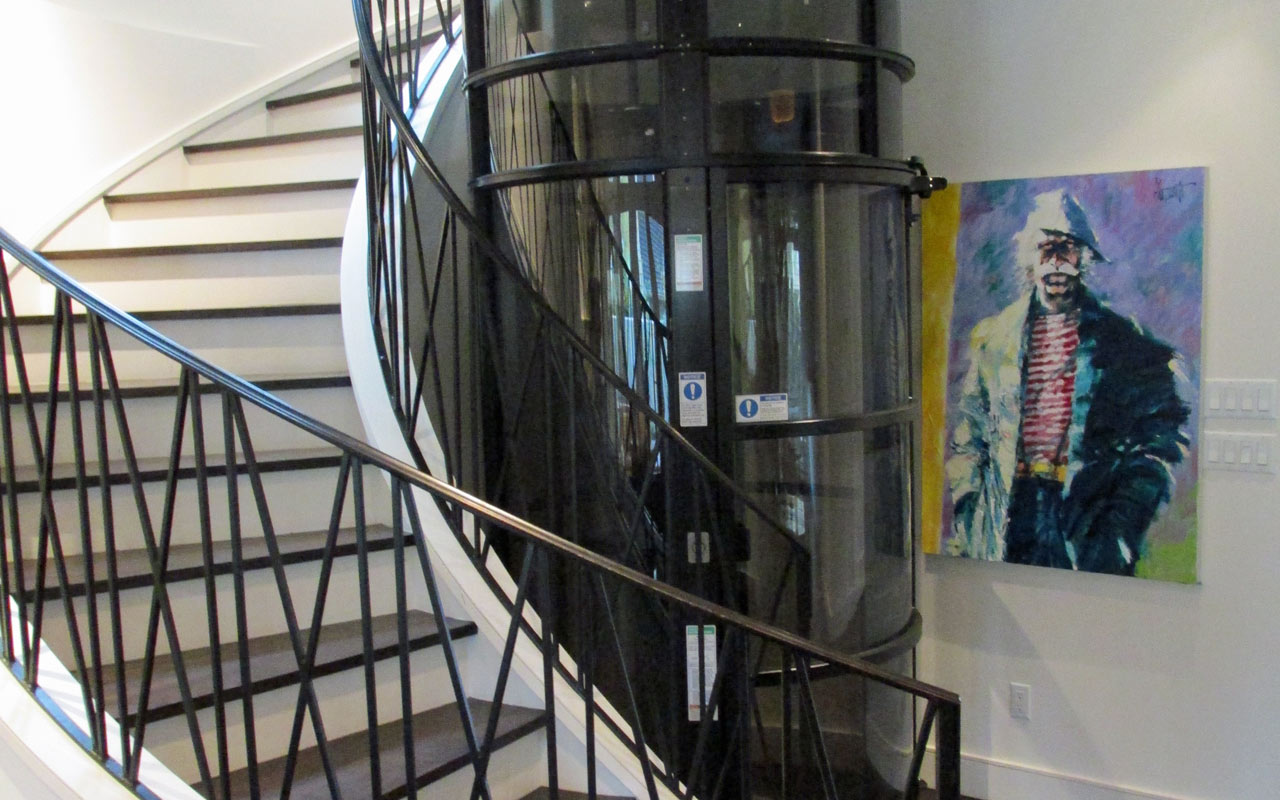
Live in a Multilevel Home? Install a Pneumatic Vacuum Elevator
- Cost: $60,000 to $80,000 (big project)
If you live in a multilevel house and you plan to stay there as long as you can, you're going to eventually face the problem of how to get up and down the stairs. Some homeowners turn to a traditional elevator, but installing one is a major project that can be both expensive and time consuming.
A newer alternative: the pneumatic vacuum elevator. It looks like something from "The Jetsons," and it operates on the same general idea behind the tubes at your bank drive-through but with a fold-down seat for you. The tube whisks you up to the next level, powered by a vacuum pump. It's cheaper and takes less time to install than a traditional elevator. Another bonus: It takes up less room in your house.
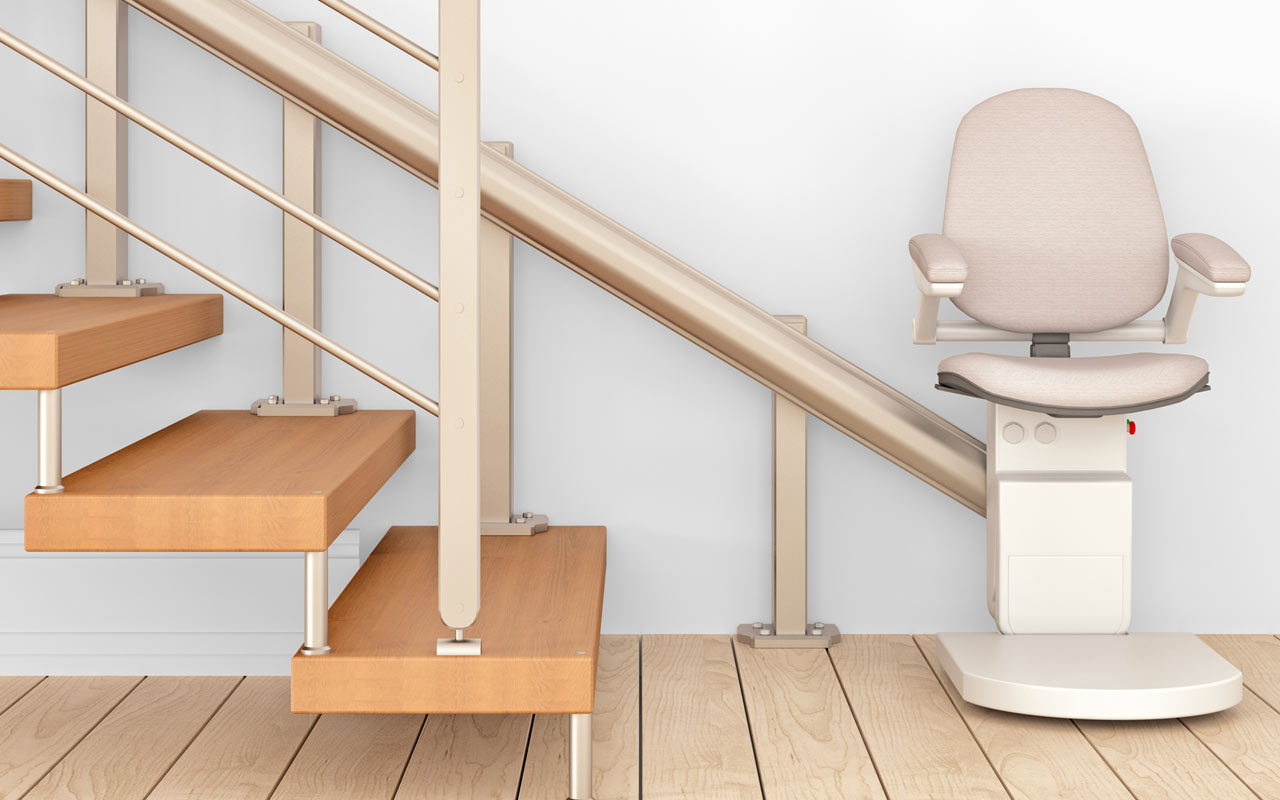
Too Many Stairs to Climb? Add a Stair Lift
- Cost: $4,000 to $6,000 (small project)
For a less-expensive option, give old-fashioned stair lifts a look. The seats and footrests on newer models fold up when not in use, and the rails have a sleeker and more modern appearance.
They're particularly easy to use on a flight of stairs with no curves. Installation usually takes less than a day.
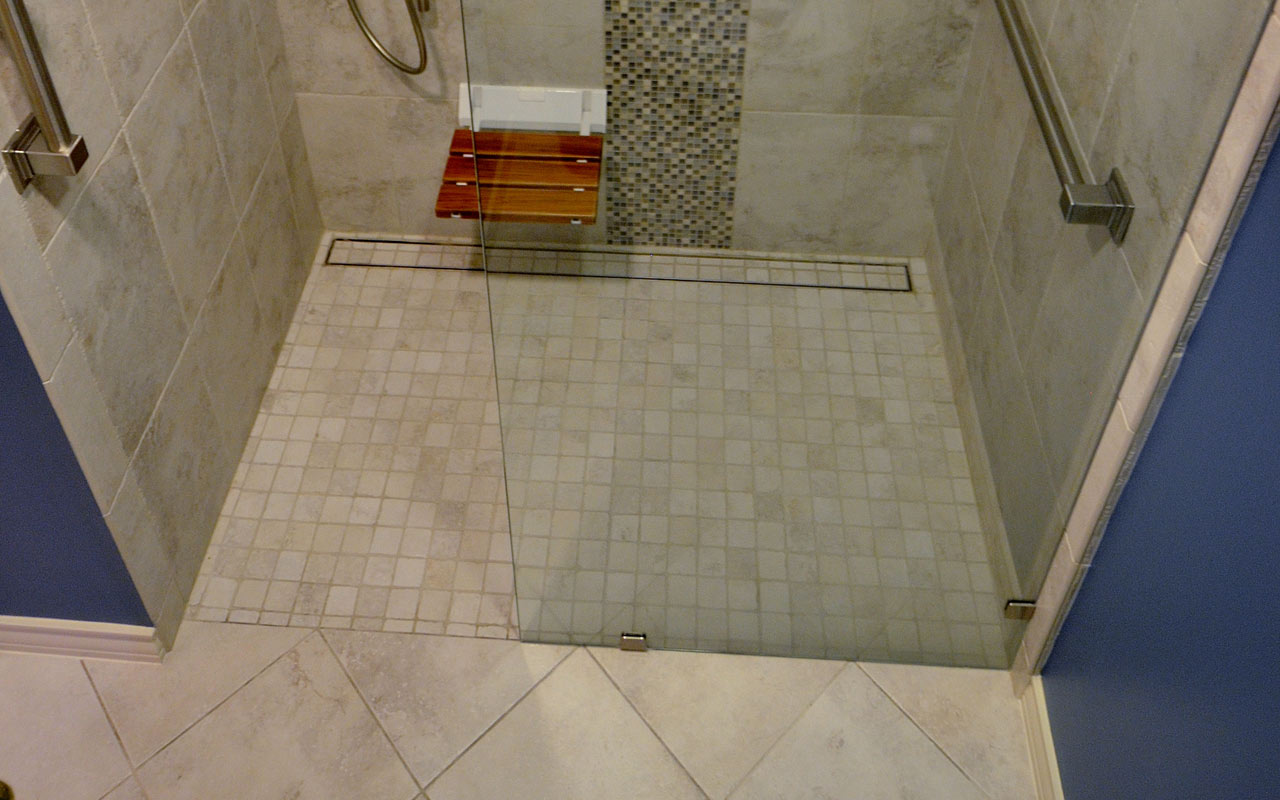
Boost Bathroom Safety With a Curbless Shower
- Cost: $8,000 to $11,000 (big project)
A curbless shower allows you to walk in and out without stepping over a big threshold. It opens the floor space for easy maneuvering, which can be an advantage when you might need help from someone else while you're in the bathroom.
You can also use a rolling shower chair, so you can get in and out without needing to stand, walk or transfer in a wet area that can be slippery, says aging-in-place consultant Louis Tenenbaum. The floor is sloped so the water flows down the drain. You can add a chair or bench, with shower accessories reachable from a sitting position.
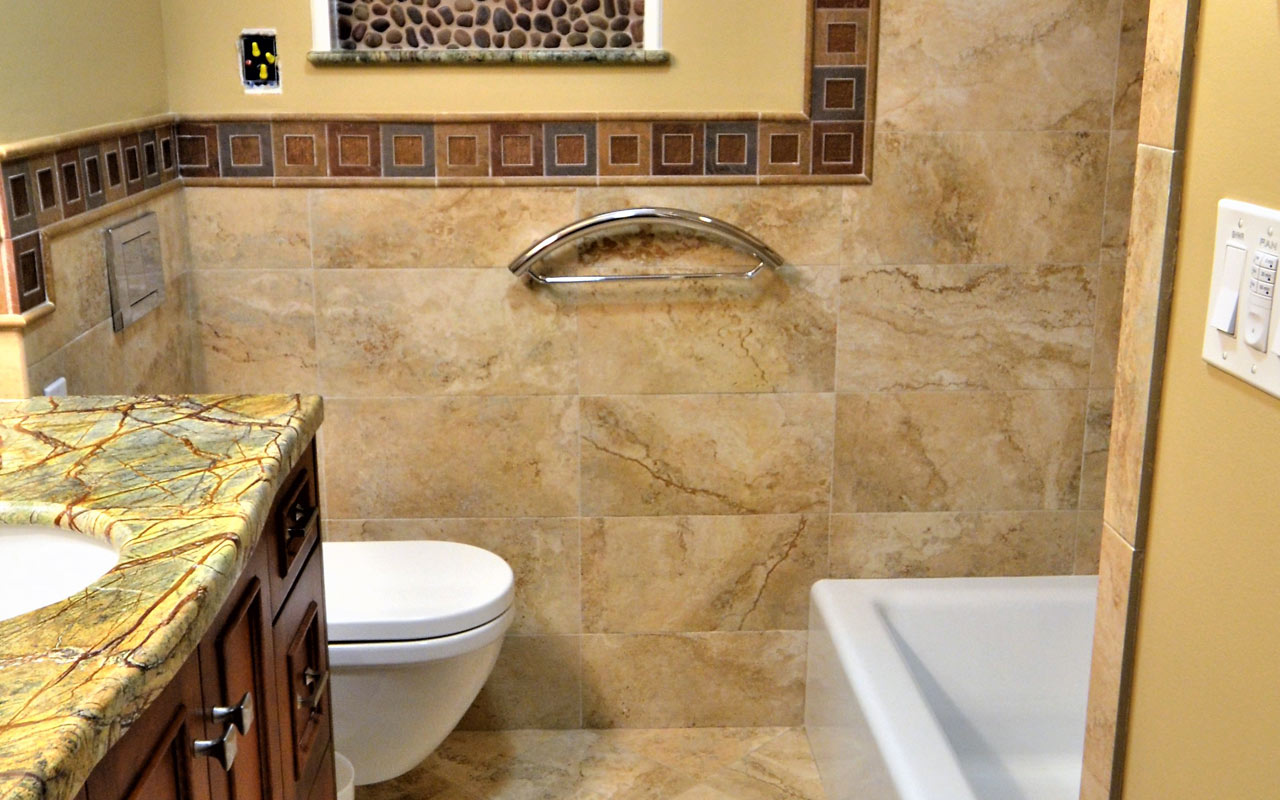
Add Grab Bars to Your Bathroom
- Cost: $1,000 (small project)
- Shop for grab bars
Your bathroom needs to be safe, but it doesn't need to look like a hospital room. Some of the newer grab bars blend better into the bathroom's design and avoid that institutional look. The bars hold your weight but have the same decorative details as towel racks or shower shelves.
If you need support pulling yourself up from the toilet, for example, you can grab on to a reinforced toilet roll holder. It also helps to place them strategically where you will actually use them, so think about how you move around the bathroom before installation.
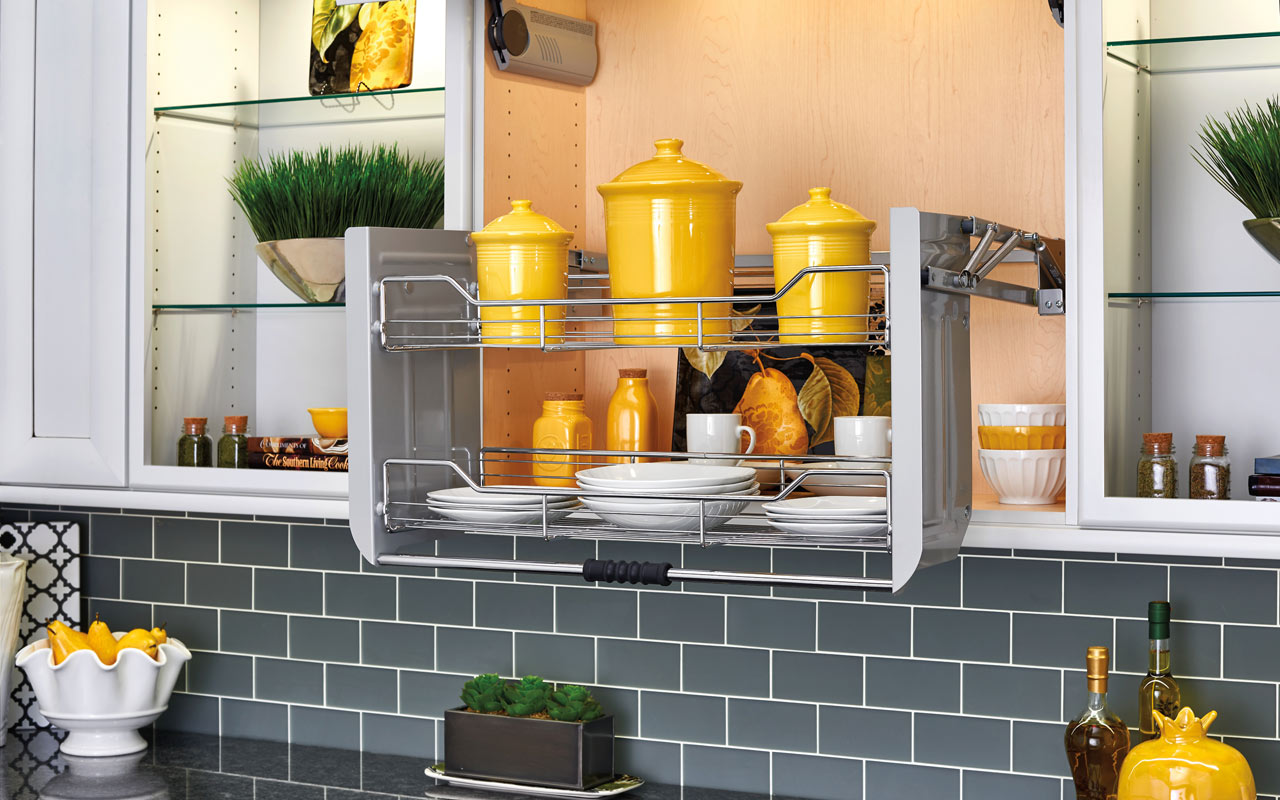
Revamp Your Kitchen Cabinets With Pull-Down and Pullout Shelves
- Cost: $1,600 for three pull-down shelves in upper cabinets; pullout pantry shelving system, $1,100 to $2,500 (big project)
- Shop for pull-out shelves
For aging homeowners, reaching wall cabinets can be a stretch. But there's a solution: pull-down and pullout shelves, says Curt Kiriu, president of CK Independent Living Builders, in Mililani, Hawaii.
You can put the pull-down shelves in upper cabinets, the pullout shelves in lower cabinets and install a pullout pantry system for good measure. There's a handle on the bottom of the shelves in the upper cabinets, so you can pull down the shelves toward you and bring them to countertop level. The pullout shelves in the lower cabinets eliminate the problem of bending and reaching into the back of a shelf to get things. And the pantry system eliminates the need to reach up for spices or other items. You can install the shelves in your existing cabinets.
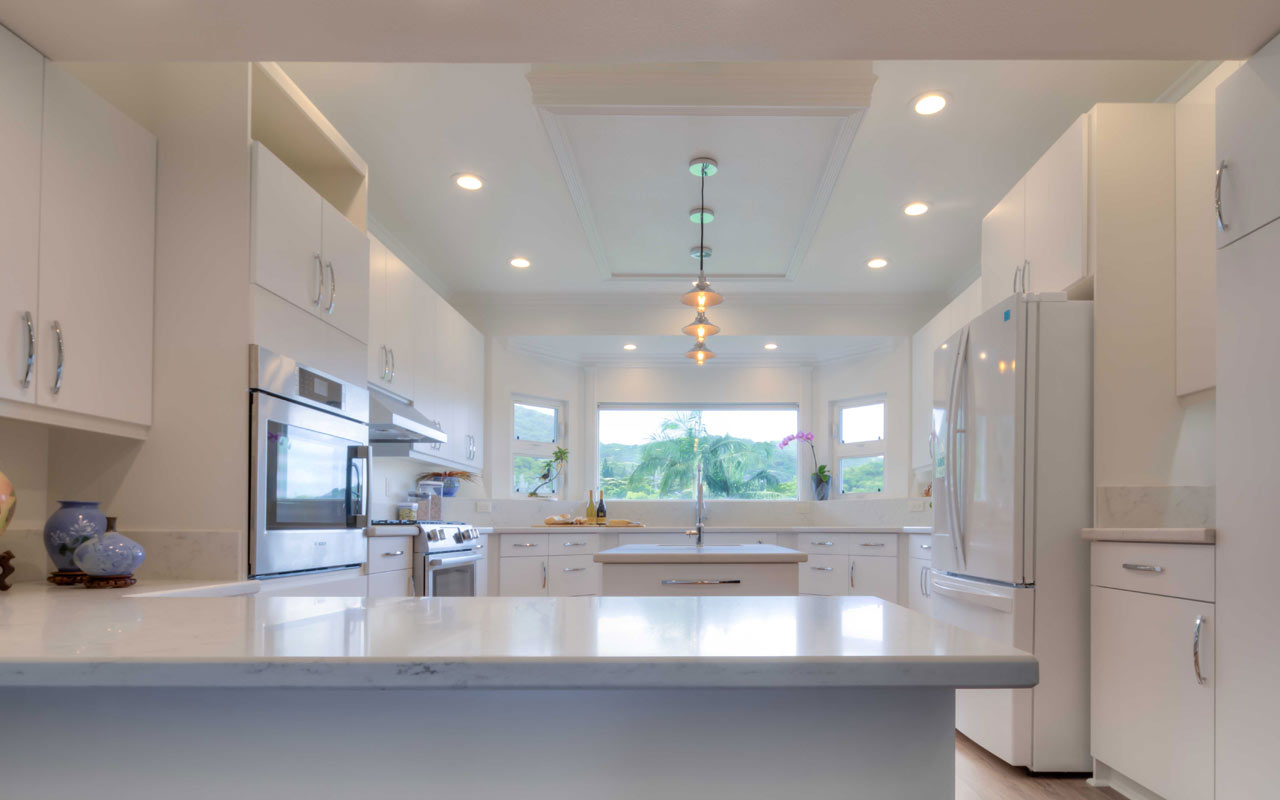
Update Your Kitchen Drawer and Cabinetry Pulls
- Cost: $300 (small project)
- Shop for cabinet pulls
This area to improve seems like such a small thing that you might not even notice it: the pulls you use to open your cabinet drawers and doors. But when you get older, you can catch your fingers in small loops on the pulls or find it painful to tightly grasp them.
You can change them out to longer and wider drawer pulls, which you see used in this kitchen, and which are easier for arthritic hands. Even small changes such as replacing cabinetry pulls can make your kitchen more functional for you as you age.
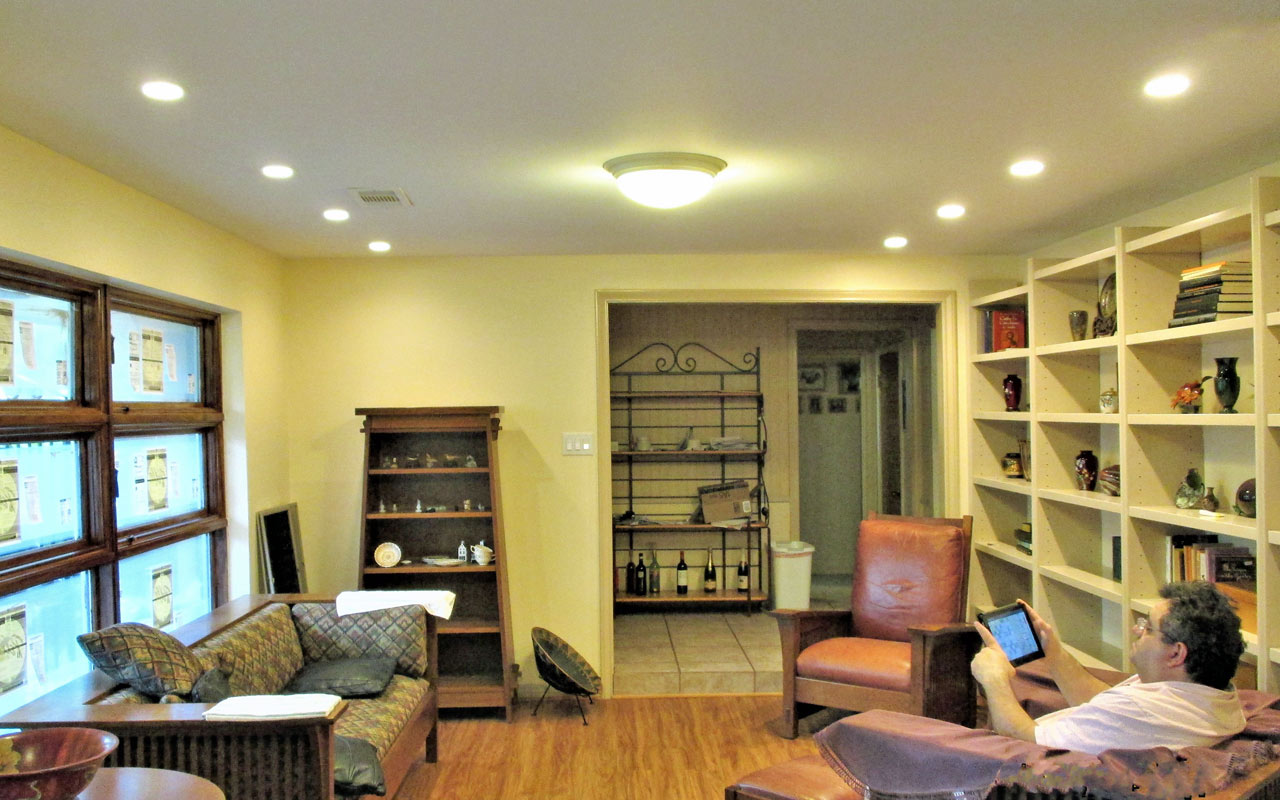
Brighten Things Up With LED Canister Lights
- Cost: $200 per fixture (big project)
- Shop for canister lights
Your vision declines as you age, so don’t forget about improving the lighting in your home. Your old ceiling fixtures may not be bright enough, and putting lamps around the room likely won’t be adequate to compensate.
For a total of $1,600, installing two rows of four LED canister lights running lengthwise on each side of a living room ceiling can transform a once-dismal room into a comfortable place to curl up on the furniture with your tablet or book. And bonus: The LED bulbs will last for years.
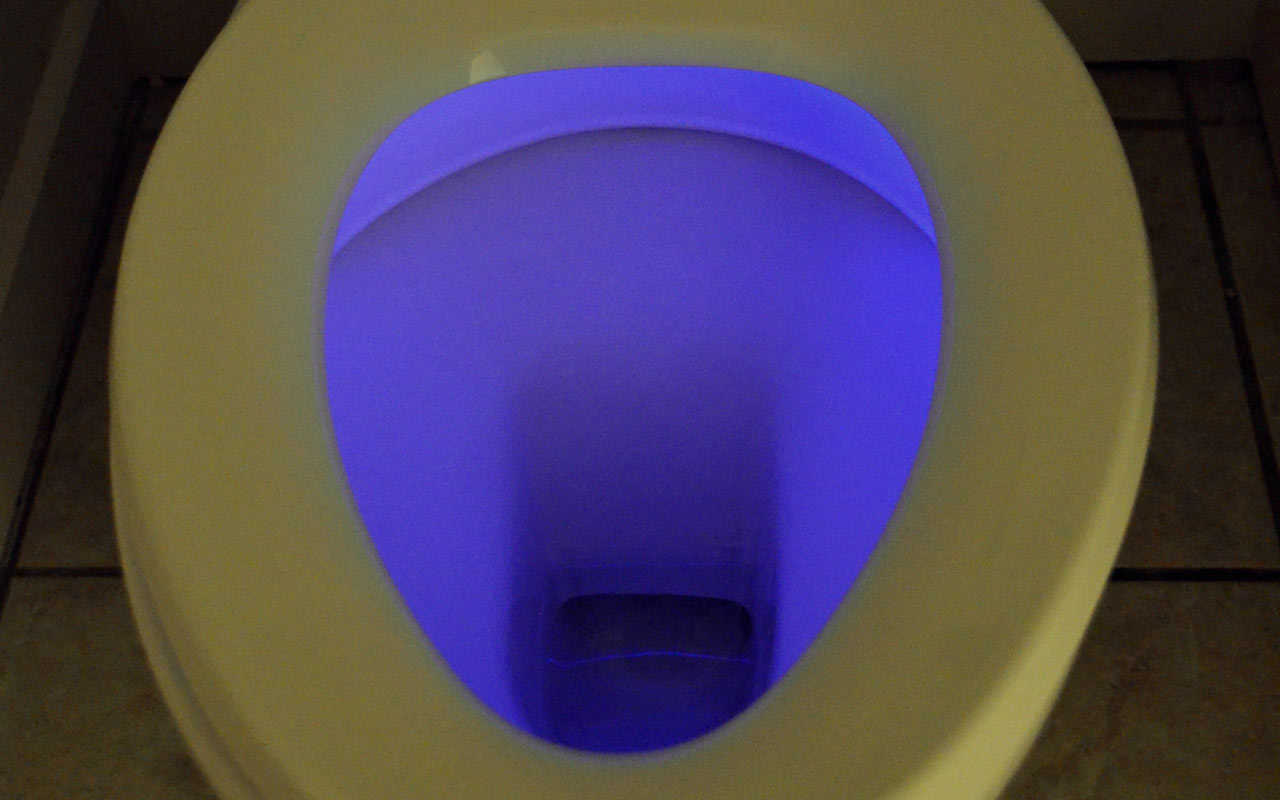
Add Nightlights (With a Twist) Throughout Your Home
- Cost: $60 to $100 for a light-rimmed toilet seat (small project)
- Shop for light-rimmed toilet seat
Other areas of your home also can benefit from lighting changes. You can rim a toilet seat with a soft blue light, for instance, so you can easily and safely find the toilet without turning on a bright light.
The light will even highlight the inside of the bowl when you lift the seat, for extra help. In your kitchen, you can add toe-kick nightlights under your base cabinets, for when you sneak in for a midnight snack.
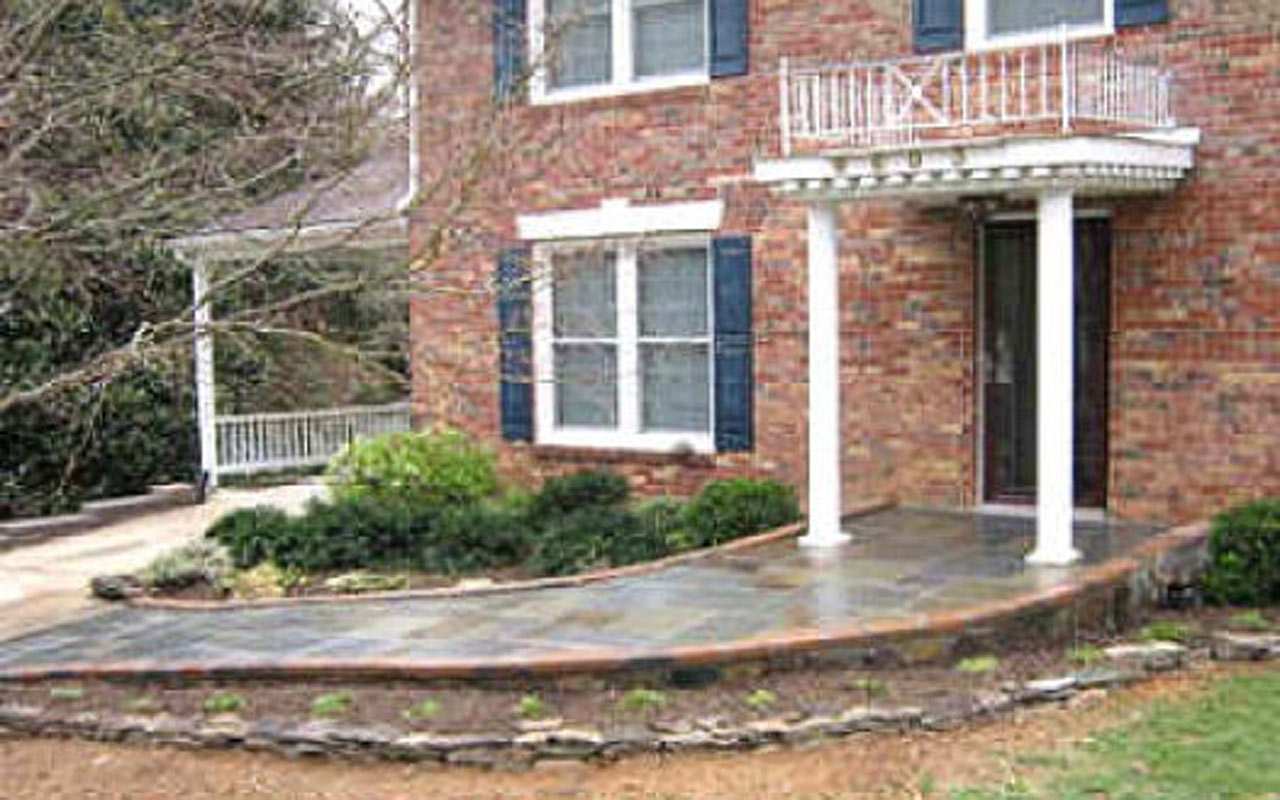
Build a Ramp for Easier Access to Your Front Door
- Cost: $8,000 (big project)
Homeowners sometimes worry that ramps from a sidewalk to the front door may be unsightly and detract from value when selling their homes, but like grab bars, ramp designs are improving, as you can see with this example.
Instead of a typical wooden ramp with railings attached to the side of the house, you can build a path that looks like a sidewalk, often using slate, and nicely bordered by landscaping—a “lipstick on a pig” approach that hides the appearance of a ramp.
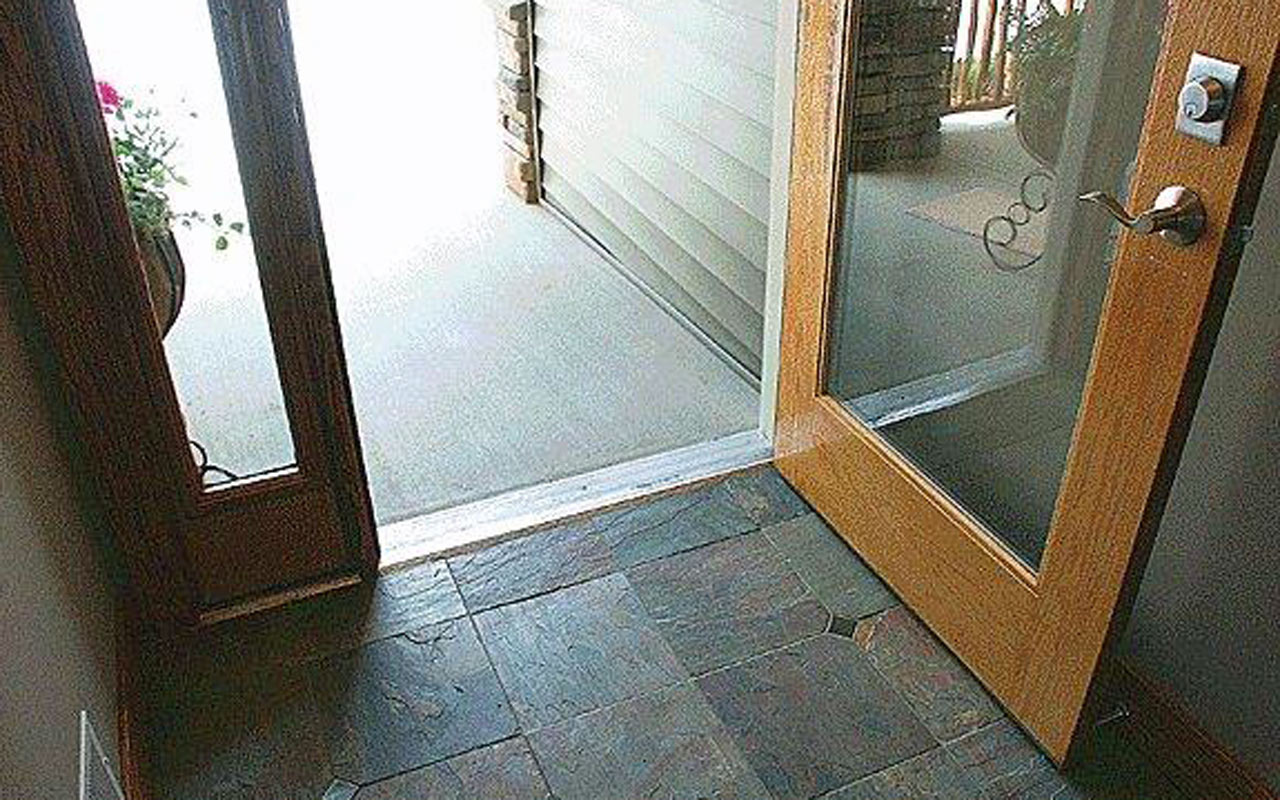
Eliminate the Door Threshold
- Cost: $400 (small project)
As you get older, just getting to the door might not be enough. A typical entry door often has a threshold that sticks up about an inch or so, making it hard for wheelchairs to pass over and presenting a tripping hazard.
You can remove the threshold bump as pictured here and give the door a retractable bottom that seals when the door is closed and lifts when the door is swung open. A homeowner can activate the device and open the door using just a pinky finger—with no threshold bump, he or she can roll or easily walk in. When the door closes, the rubber door seal drops to ensure the entry is tight and secure.
Get Kiplinger Today newsletter — free
Profit and prosper with the best of Kiplinger's advice on investing, taxes, retirement, personal finance and much more. Delivered daily. Enter your email in the box and click Sign Me Up.

-
 Stock Market Today: Trump Retreats, Markets Rejoice
Stock Market Today: Trump Retreats, Markets RejoiceStocks rally, yields soften, the dollar rises, and even beaten-down names enjoy the wages of potential trade peace.
By David Dittman
-
 In Trump’s Economy Should 401(k) Savers 'Set It and Forget It?'
In Trump’s Economy Should 401(k) Savers 'Set It and Forget It?'It’s hard to bury your head in the sand when the markets are volatile. Here’s when it makes sense and when it doesn’t.
By Donna Fuscaldo
-
 What to Do With Your Tax Refund: 6 Ways to Bring Growth
What to Do With Your Tax Refund: 6 Ways to Bring GrowthUse your 2024 tax refund to boost short-term or long-term financial goals by putting it in one of these six places.
By Rachael Green
-
 What Does Medicare Not Cover? Eight Things You Should Know
What Does Medicare Not Cover? Eight Things You Should KnowHealthy Living on a Budget Medicare Part A and Part B leave gaps in your healthcare coverage. But Medicare Advantage has problems, too.
By Donna LeValley
-
 12 Great Places to Retire in the Midwest
12 Great Places to Retire in the MidwestPlaces to live Here are our retirement picks in the 12 midwestern states.
By Stacy Rapacon
-
 10 Cheapest Small Towns to Live In
10 Cheapest Small Towns to Live InThe cheapest small towns might not be for everyone, but their charms can make them the best places to live for plenty of folks.
By Dan Burrows
-
 Best Cold Weather Places to Retire
Best Cold Weather Places to RetirePlaces to live Some like it hot; others not so much. Here are the 12 best places to retire if you can't stand the heat.
By Stacy Rapacon
-
 15 Reasons You'll Regret an RV in Retirement
15 Reasons You'll Regret an RV in RetirementMaking Your Money Last Here's why you might regret an RV in retirement. RV-savvy retirees talk about the downsides of spending retirement in a motorhome, travel trailer, fifth wheel or other recreational vehicle.
By Bob Niedt
-
 The Cheapest Places To Retire in the US
The Cheapest Places To Retire in the USWhen you're trying to balance a fixed income with an enjoyable retirement, cost of living is a crucial factor to consider.
By Stacy Rapacon
-
 The Six Best Places to Retire in New England
The Six Best Places to Retire in New Englandplaces to live Thinking about a move to New England for retirement? Here are the best places to land for quality of life, affordability and other criteria.
By Stacy Rapacon
